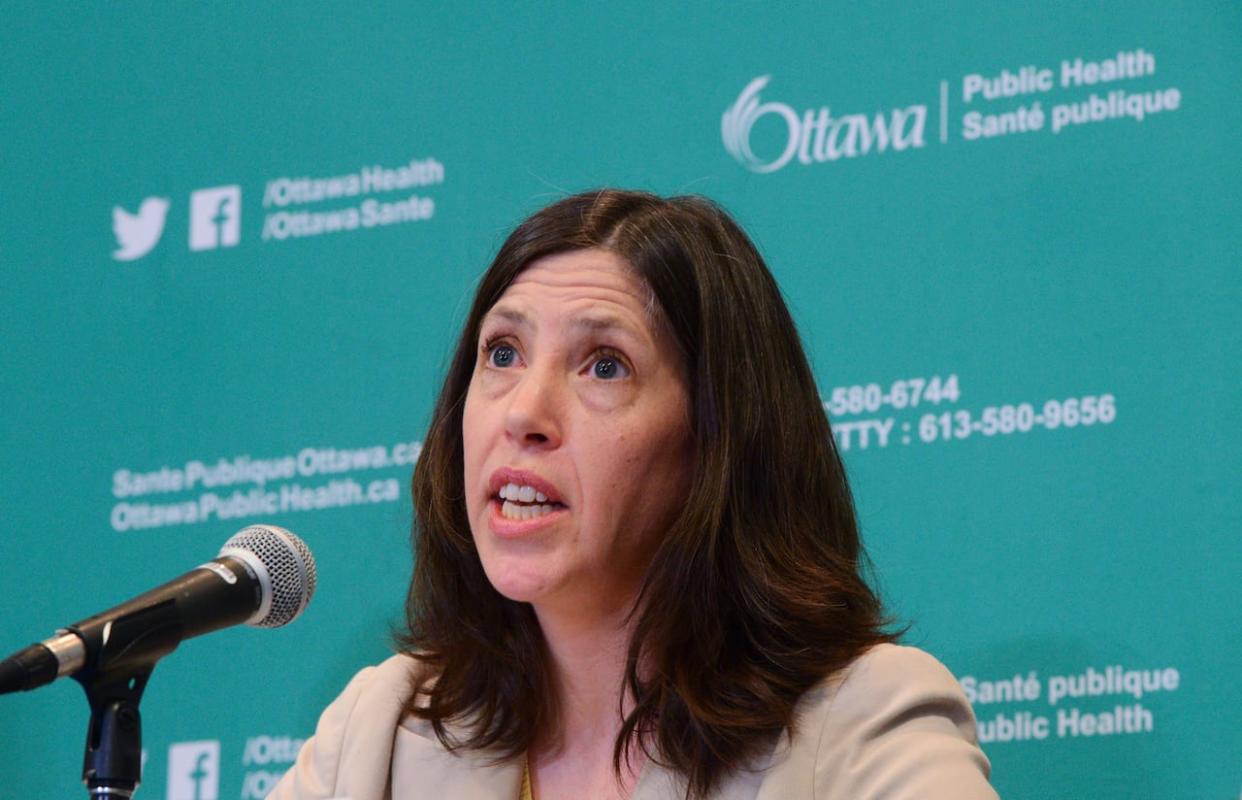Ottawa Public Health strained as it tackles infectious diseases, report says

Ottawa's public health agency is raising the alarm over its capacity to respond to infectious diseases as reported cases rise and become more complex to manage.
In its latest report, Ottawa Public Health (OPH) is recommending the city's board of health urge Ontario's Health Ministry to review its funding formula to help the agency better respond to infectious diseases in the city. It also calls on the minister to fast-track the development of a provincial tool to help manage and monitor those diseases.
This comes as the health agency outlines a dire picture of its resources in the midst of an increasing caseload.
OPH says its core work is to prevent and reduce the spread of infectious diseases through investigating cases, monitoring and supporting infected patients, and tracing contacts. These are done through various programs within the agency, and OPH is required to follow provincial protocols.
But OPH says in recent years, its workload has "substantially increased" due to rising disease rates, population growth, immigration, travel and the emergence of new diseases due to climate change.
"Current resources are not sufficient to sustain the work efforts needed to meet objectives set out in provincial protocols," reads the report, submitted by Ottawa's Medical Officer of Health Dr. Vera Etches.
"Further strain is anticipated on the program as infectious disease rates are likely to continue to rise in 2024 and beyond."
Lyme disease, HIV among diseases on the rise
OPH says last year, it received 7,608 confirmed reports of infectious diseases excluding the flu and COVID-19.
That's a rise of more than six per cent over the pre-pandemic average between 2017 and 2019, the agency said.
Among the diseases that saw the greatest increases in confirmed reports between that period and 2023 are:
Lyme disease, which saw a 99 per cent increase.
Invasive Group A streptococcal disease (iGAS), which rose by 110 per cent.
HIV, which jumped 73 per cent.
Cyclosporiasis, up 71 per cent.
Other notable diseases that saw an increase include gonorrhea, syphilis, tuberculosis and hepatitis B, according to Ontario Ministry of Health data for Ottawa in May.
In addition to challenges such as lack of access to family doctors and antibiotic-resistant cases (Ottawa saw its first reports of locally acquired shigellosis — bacteria that's extensively drug-resistant — in March), OPH says it's using an aging provincial reporting tool that's insufficient to meet reporting standards.
"While the Ministry of Health is working on a new provincial tool … this tool will likely not be available for several years," the report reads. It urges the province to update the tool as soon as possible.
"Outdated technology currently remains a major driver of case and contact management workload," according to the report.
Rise in infectious diseases not surprising, says prof
Dr. Giorgia Sulis, an infectious disease physician and assistant professor at the University of Ottawa, said she is not surprised by the rise of infectious diseases in the city, adding that it's a trend across the province.
Sulis noted the resurgence of vaccine-preventable infections like measles, which the report attributes to a pandemic-related decrease in vaccination coverage of young people in Ottawa.
"For some time, the attention and resources and funding has been mostly focused on COVID-19, thus neglecting other conditions ... that were already around and now we are paying for that," she said.
OPH says it needs an investment to support the equivalent of five full-time employees to make sure it can meet standards to manage infectious diseases. It says it will need further investment in staffing in the coming years as the city's population grows.
In an emailed statement Friday, Hannah Jensen, a spokesperson for Health Minister Sylvia Jones, said the province has increased its investment in OPH by over 14 per cent since 2018.
That's in addition to the $100 million it invested in public health units across the province during the COVID-19 pandemic, Jensen said.
Jensen's statement adds that the province will restore the 75/25 per cent provincial/municipal cost-sharing model this year, and increase base funding by one per cent per year for three years.
The OPH report will be presented to the board of health June 17.


